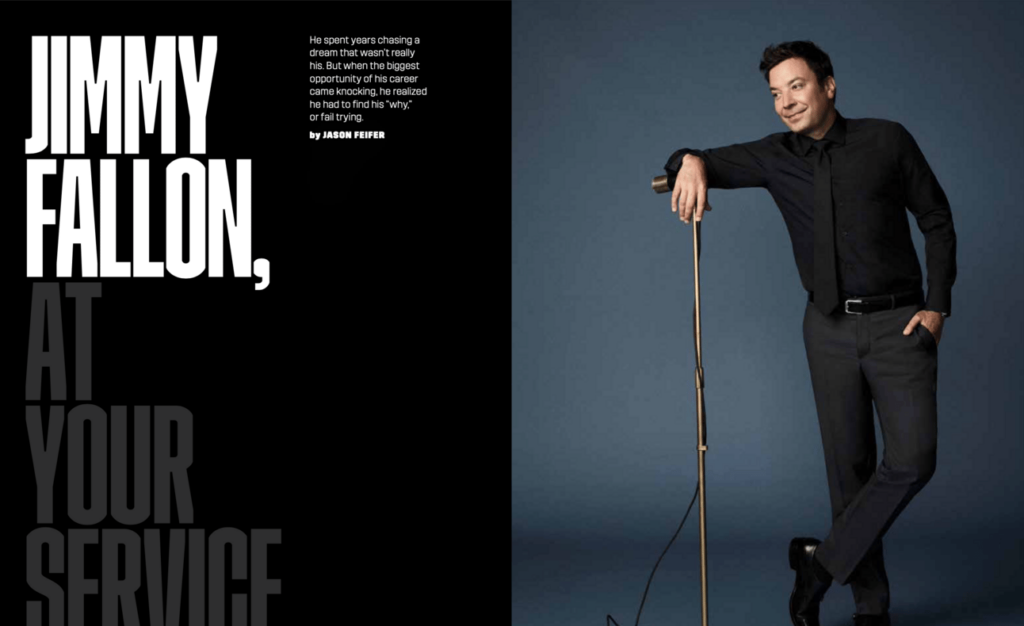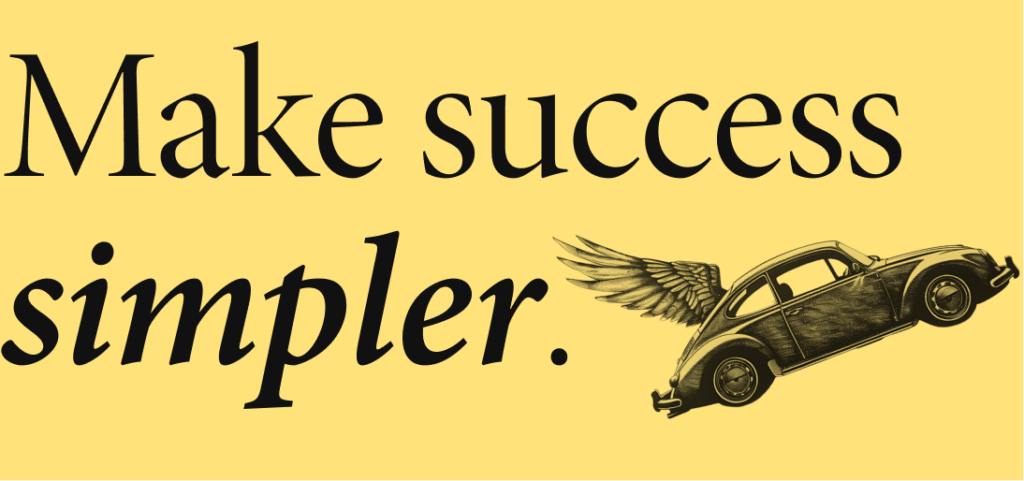Welcome to One Thing Better. Each week, the editor in chief of Entrepreneur magazine (that’s me) shares one way to level up — and build a career or company you love.
I just wrapped up a long stretch of travel, so had no time to write last week. Here’s one of my favorite editions from last year.
Today’s one thing: Telling a story.
That one thing, better: Reaching your audience.

You’re trying to communicate something. But it’s not connecting.
Maybe you’re writing. Or speaking. Or sharing information. Maybe you’re trying to reach the masses, or a small group, or just an audience of one.
Either way, I have a solution:
I call it “bricks and mortar” — and it is the single most important insight I’ve had as a communicator.
This will help you connect with an audience. It’ll help you keep them engaged, and to be more memorable and meaningful to them.
Today, I’m giving it to you.
But first, to appreciate why it works, you must understand why reaching people is so hard — and how to overcome it.
The first question anyone asks.
Imagine a salesperson shows you a product. What do you do?
Likely, you’ll ask yourself a version of this question:
“Is this for me… or not for me?”
A sales coach once told me this. He instructs salespeople to anticipate this question, and to answer it with the first words they say. The salesperson must show that, yes, whatever they’re selling is for you.
This insight stuck with me, because I realized it isn’t just about sales. It’s a tactic for everything.
When you open every edition of my newsletter, you ask: “Is this for me… or not for me?”
When you browse the supermarket aisles, you look at products and think: “Is this for me… or not for me?”
When you start a new TV show, you wonder: “Is this for me… or not for me?”
Let’s call this our First Question. People are always asking it.
Which means that, as communicators, we must always answer it.
But that’s not all, because…
We must answer it repeatedly.
Imagine your friend calls you up and says, “You have to hear this story!”
The First Question is easily answered. Your friend has a story you’ll love! Of course it’s for you!
But then your friend launches into a long, rambling, completely unsatisfying story. (We all have friends like this, right?) At some point, you start to wonder: Is this going anywhere? What’s the point of this?
In other words, it’s not enough to just answer the First Question once. If you want to hold someone’s attention and connect with them, you must answer it repeatedly.
Really internalize that. The more you think about your audience, the more you should develop a kind of healthy anxiety about them. Every time you speak or write, you’ll start to wonder, “Is my audience still with me? Do they see why this is valuable to them?”
Now it’s time for “bricks and mortar”
“Bricks and mortar” is my way of connecting with audiences. It’s my way of repeatedly saying, “Yes, this is for you.”
It’s a visual metaphor that goes like this:
The bricks are facts. They’re the story you tell, or the details you share about yourself. They are literally the thing you’re writing or talking about.
The mortar is context. This is you addressing your audience, either directly or indirectly, to make the bricks as relevant to them as possible.
The best stories, and the most powerful communications, aren’t just about bricks. They’re not just a matter of this happened, then this happened, then this happened…
What matters is how you assemble those bricks.
The mortar holds everything together. It’s what makes a brick useful — assembling all these facts into a structure specifically designed for your audience.
I’ll give you an example.

I once profiled Jimmy Fallon for Entrepreneur magazine. On its face, this makes no sense: Jimmy is an entertainer, so what does he have to offer entrepreneurs!?
It was my job to figure that out — which meant learning a lot from Jimmy, and then sharing it in a relevant and helpful way for entrepreneurs.
To see what I did, let’s zoom in on one little section of the story I wrote. Jimmy and I were talking about his early career. He’d quit Saturday Night Live to pursue movies, but he wasn’t very good at it. Even worse, he didn’t seem to have a passion for it.
During our interview, I asked Jimmy why he pursued that goal at all. His answer was interesting. Here’s how I wrote it:
So I ask Fallon: “If somebody had asked why that was your goal, would you have had an answer?”
He pauses. Three seconds of silence.
“No,” he finally says. “I’m trying to think, why would that be my goal? Maybe, from all the books and articles that I’d read, the trajectory of someone famous from Saturday Night Live is to do movies. It’s just the path.”
Want to hear the opposite of a self-directed mission? To hear an entrepreneur’s greatest trap? Four words, right there: “It’s just the path.” Not your path. Simply the path, a path, some path, a clearing that other people make for their own purposes, not for yours. That is the path through an unimaginative life and away from the satisfaction of a risk taken.
Did you catch what I did there?
This was bricks and mortar — combining the facts of my conversation (bricks), with context specific to my audience (mortar).
Here, let’s look at it again:
[BRICK] So I ask Fallon: “If somebody had asked why that was your goal, would you have had an answer?”
[BRICK] He pauses. Three seconds of silence.
[BRICK] “No,” he finally says. “I’m trying to think, why would that be my goal? Maybe, from all the books and articles that I’d read, the trajectory of someone famous from Saturday Night Live is to do movies. It’s just the path.”
[MORTAR] Want to hear the opposite of a self-directed mission? To hear an entrepreneur’s greatest trap? Four words, right there: “It’s just the path.” Not your path. Simply the path, a path, some path, a clearing that other people make for their own purposes, not for yours. That is the path through an unimaginative life and away from the satisfaction of a risk taken.
In other words, here’s what I was doing:
Bricks: That story about Jimmy could have been told to any audience, for any purpose. Maybe it belongs in a story about the entertainment industry, or in a career guide for comedians.
Mortar: Now that moment is relevant to my audience. It is given a specific purpose, and contextualized in a useful way.
My whole Jimmy Fallon profile reads like that — bricks, mortar, bricks, mortar, me telling a story and then using those facts to uniquely serve my audience’s needs. I am always assuring people: Yes, this is for you.
Here’s how you can do this.
You don’t have to write or speak exactly like I did in the Jimmy story. The point isn’t to simply intersperse nods to your audience every few paragraphs.
Instead, the point is to be relentlessly in service of your audience — to always be aware that people are reading or listening or watching or engaging because they are, in some way, seeking benefit for themselves. They expect whatever you say to be for them.
So what does your specific audience want? To be entertained? Challenged? Informed? Engaged? You should know the answer.
When you think like this, you’ll become more aware of what you’re writing and saying — right down to the sentence level. I do it all the time now, even in conversations and emails.
Let’s say I’m interviewed on a podcast and someone asks me, “How did your career begin?”
Years ago, before I used bricks and mortar, I would have thought: Oh, this podcaster is interested in me! Then I’d have given a long, detailed answer about my early career.
But now I think differently. I wonder: What does this audience want? If I’m asked about my early career, it’s probably because this podcast’s audience cares about starting their careers.
So now I give a few small details about my journey. Those are the bricks. Then I pivot into the lessons I learned that are applicable to the listener. Those are the mortar.
Because look, here’s the thing: You might have the best stories in the world. The best insight. The best information. The best product. The best service. The best anything. But nobody will bother hearing them if you don’t answer their First Question.
If you stack a bunch of bricks on top of each other, all you’ve made is a wall that easily falls. Bricks need mortar. Facts need context. A story isn’t good because of what’s in it — it’s good because of how you tell it, and that means you know who you’re telling it to.
You are the thing that makes a story good. Never forget that.
That’s how to do one thing better.
